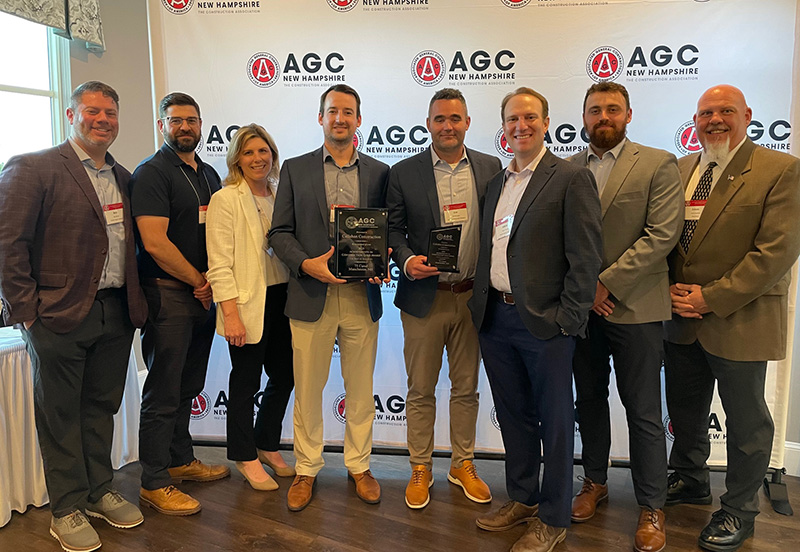News: Construction Design & Engineering
Posted: September 15, 2011
By Jon Farrell and Kara Cefalo - Attention Massachusetts historic building owners: You maybe eligible for rehabilitation tax credits
Do you own a building in Mass. that is considered a qualified historic structure? If so, you may be eligible for a credit related to the cost of rehabilitating that historic structure.
Structures rehabilitated between January 1, 2005 through December 31, 2011, are eligible to claim a Mass. income tax credit equal to 20% of the costs of the qualified rehabilitation expenditures. To be eligible for the credit, the property must be substantially rehabilitated. Substantial rehabilitation is met when the qualified rehabilitation expenditures of the building exceed 25% of the taxpayer's adjusted basis in the building during a 24 month period. It is claimed in the year that the substantially rehabilitated property is placed in service. Any unused credit may be carried forward for up to five years.
It should be noted that if the credit is allowed, the basis of the property is decreased by the amount of the credit allowed. Additionally, if the taxpayer disposes of its interest in the project before the end of a five year period, starting on the date that the final certification is received, the credit will be subject to recapture.
The credit is subject to authorization and allocation by the Mass. commissioner. The Mass. commissioner, with consultation from the Mass. Historical Commission, can authorize up to $50,000,000 in historic rehabilitation tax credits annually.
In order to meet the definition of a certified rehabilitation, an initial, second, and a final certification is required. In the initial certification, the Mass. Historical Commission will decide if the structure meets the definition of a qualified historic structure.
The second certification verifies that the project is being completed as proposed and the rehabilitation work meets the standards necessary for a certified rehabilitation. The available credits are allocated among the projects that receive the second certification. When determining which projects will receive second certifications and become chosen projects, many factors are considered. These factors include possible loss or destruction of the historic structure, the need for financial assistance, the feasibility of the project, public support for the project, and if the project will benefit the state of Mass.
The final certification is issued when the construction is complete. It certifies that the work was completed as proposed and the costs are consistent with the completed work. This final certification proves that the expenditures are qualified rehabilitation expenditures and that the chosen project is now completed.
Taxpayers who are eligible to receive a Mass. historic rehabilitation credit can transfer the credit to another taxpayer to use against their tax liability. The transferee will be treated as if it had sustained the qualified rehabilitation expenditures itself. The ownership in the project does not have to be transferred along with the credit.
It is important to note that only taxpayers who are allowed to take the credit may transfer the credit. Accordingly, a partnership cannot transfer the credit because the partnership does not have a tax liability. If the credit is allocated to a partnership, the credit must be passed through to the partners either pro rata or in accordance with an executed agreement among the partners.
After the credit is passed out to the partners who are subject to Mass. tax, the credit may be transferred. In order to transfer the credit, taxpayers must give prior notice to the Mass. commissioner by completing a form of transfer statement and a copy of the proposed transfer contract prior to the actual transfer. The executed transfer contract needs to be filed within 30 days of the completed transfer. The transferee must use the credit during the year of transfer. Any unused credit is allowed to be carried forward for up to five years.
Transferees are not subject to recapture mentioned above because the recapture applies only to taxpayers with an ownership interest in the completed project. The transfer option is very important. It gives the taxpayer rehabilitating the property the ability to transfer/sell the credit to help fund the qualified rehabilitation expenditures. On many occasions, the transfer/sale is the major source of equity for the project.
The Mass. historic rehabilitation tax credit provides a powerful tax incentive to improve an existing historic building. The amount of the credit and the ability to sell it can help fund the project. The credit is improving historic buildings across the Commonwealth of Mass. as well as affecting the economic impact on the surrounding communities in which the historic rehabilitation projects are being completed.
Jonathan Farrell, CPA, is a principal and Kara Cefalo, CPA, is a manager in the real estate practice group at DiCicco, Gulman & Co., Woburn, Mass.
MORE FROM Construction Design & Engineering
Nobis Group awards Robinson and Moreira STEM scholarships
Concord, NH Nobis Group, a 100% employee-owned consulting firm specializing in engineering and environmental solutions across the Northeast, has named the recipients of its 2025 STEM Scholarship: Andie Moreira of

Columns and Thought Leadership

Careers in Construction Month focus on training and safety - by Joe Camilo
October is Careers in Construction Month, and rarely has it been more consequential. According to our chapter’s national parent organization, the construction industry needs to attract half-a-million new workers in the coming year to meet demand. Addressing that need is a huge job, but we at ABC MA are trying to do our part.

The design-build advantage: Integrated interior design solutions - by Parker Snyder
When it comes to corporate interior spaces for both commercial and industrial projects, partnering with a design-build firm with in-house interior design services can offer clients many benefits. Unlike traditional delivery methods where interior designers operate independently from the design and construction teams, often creating a longer project timeline as cost negotiations and revisions ensue

Ask the Electrician: Is summer a prime time for commercial electrical maintenance?
The answer is “Yes!” While January marks the official new year, many businesses view September as a fresh start. This makes summer an ideal time for commercial property owners to schedule long-term electrical maintenance projects.

The rise of incubators and co-working spaces: The latest in life sciences - by Matt Combs
In recent years, the life science industry has witnessed a shift in how companies operate and innovate. One of the key driving forces behind this transformation is the emergence of incubators and co-working spaces specifically tailored to meet the unique budget and schedule needs of startups.







